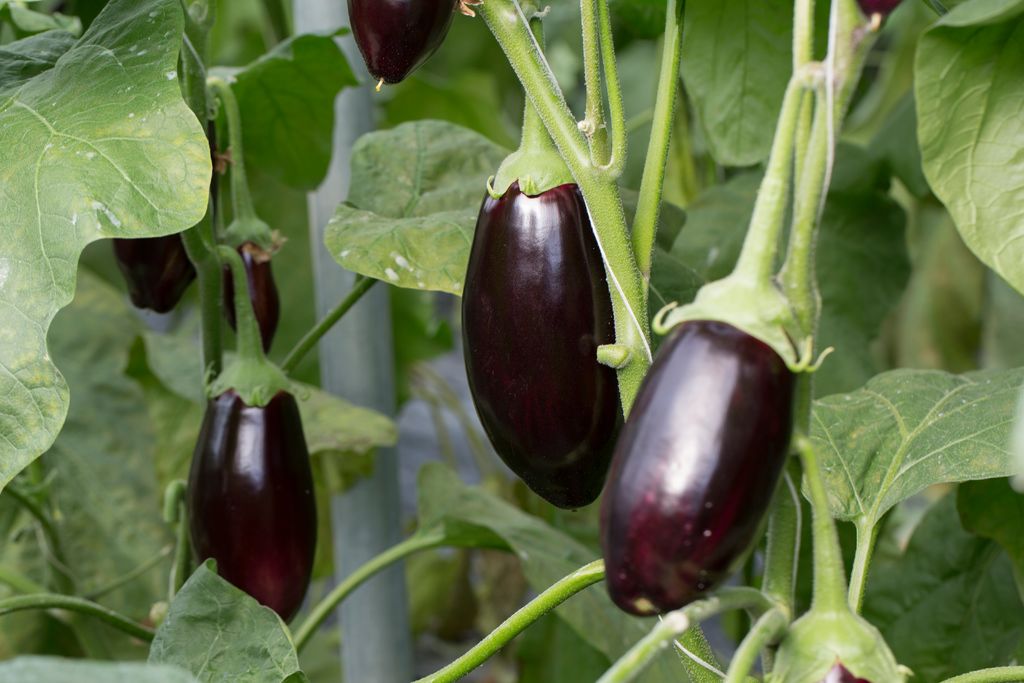Many names
You may not immediately recognise aubergine on a menu abroad. Its many names include: Brinjal (India), Berenjena (Spanish), Eggplant (US English), Patlican (Turkish) and Melanzana (Italian).
2. Different colours
Are you only familiar with the purple aubergine? The fruit can come in other colours too, like white, green and purple with white stripes.
3. Family members
The aubergine belongs to the tomato and potato family, which are all nightshades.
4. Storing aubergines
Aubergines are best stored in a cool place, outside the fridge.
5. Can you eat them raw?
You should avoid eating aubergines raw, because they can give stomach problems. In China they do eat the green variant raw, but don’t try this at home;-)
6. Surprising content
Did you know that an aubergine contains nicotine? But only a tiny amount, just 0.01%. You would have to eat 9 kilos of aubergines to get the same amount of nicotine as in one cigarette.
7. Vegetable or fruit?
The aubergine is a fruit, but is always prepared and regarded as a vegetable.
8. In what climate do aubergine grow best?
Aubergines like heat; an average temperature of 20-25 degrees is ideal.

9. Should an aubergine be peeled before cooking?
No, just slice off the end.
10. Where do aubergines originally come from?
The aubergine plant originally comes from Myamar.
11. When were aubergines first found in Europe?
Arabs brought aubergines to Spanish Andalusia in the 15th century.
12. How many fruits grow on an aubergine plant?
110 aubergines per plant, which will give you lots of moussaka.
13. What percentage of water does an aubergine contain?
The aubergine consists of 95% water and 50% of the volume is air!
14. In which national cuisine is the aubergine used most?
Asia uses a lot of aubergines. They are also frequently used in Turkey and the Middle East.
15. How big can an aubergine plant grow?
The aubergine plant can grow to a length of 5 to 6 metres.
Sources:
https://www.lovemysalad.com/blog/15-fun-facts-about-aubergines
https://www.goodhousekeeping.com/home/gardening/a20706884/growing-eggplants/
How to plant a eggplant tree ?
Give eggplants a head start on the growing season by starting them indoors, six to nine weeks before the average last frost. Soak seeds overnight to encourage germination; sow them ¼ inch deep in a loose, fine medium, such as vermiculite. Use bottom heat to maintain a soil temperature of 80 to 90 degrees for the eight to 10 days required for sprouting.
Transplant seedlings to individual pots once they reach 3 inches. When outside nighttime air temperatures are above 50 degrees, gradually expose them to the outdoors to harden them off. Keep transplanting your seedlings into larger pots as you wait for both outdoor air and soil to warm up to at least 70 degrees.
Try growing eggplants in raised beds, which heat up quickly in spring. Plants given plenty of room are healthier and more productive, so space them 2½ to 3 feet apart in all directions. Water well, pour 1 to 2 cups of compost around each plant, and firm the soil gently.
Eggplants are also good for container growing, with one plant per 5-gallon pot.

